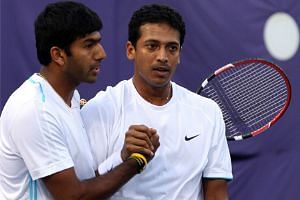
Lessons from the Bhupathi-AITA stand-off

No matter on which side of the Bhupathi-AITA divide one stands, one has to acknowledge that tennis is at least better off than other sports, for it allows these conflicts to be played out in the open. Imagine a similar stand-off in any other sport!
Mahesh Bhupathi is able to stand up to the AITA because his professional career is independent of his relationship with the country’s tennis federation. That’s because the professional circuit is run by the ATP (Association of Tennis Professionals), and the national federation has little say in Bhupathi’s career on the circuit. Perhaps the only times he has to deal with the AITA is during multi-sport events such as the Olympics or Asian Games, or team events like the Davis Cup.
How one wishes the same were true of all other sports!
In most other sports in India, such a standoff would be unthinkable without the prospect of the national federation bearing down on the player. No active player in India dares to go against the federation because his sporting career is directly determined by the national federation, right from selecting him to the national team, to forwarding his name to international competitions. To hit back at a player, the federation only has to refuse to forward his entry to an international tournament.
The International Tennis Federation, which is made up of 145 member nations, governs the sport, but it is the ATP (men) and WTA (women) that run the circuit of open senior tournaments. The story of the ATP should therefore be a rallying point for every other sport. In 1972, the top tennis professionals met at a secluded stairwell at the US Open and founded the ATP.
To quote from the ATP website: “From 1974 to 1989, the men’s circuit was administered by the Men’s Tennis Council, made up of representatives of the International Tennis Federation (ITF), the ATP and tournament directors from around the world.
Although the period during which the MTC guided the game was one of tremendous progress and improvement, players began to feel more and more that they should have a greater voice in their sport. Players had realised the time had come for them to take more control over the game.
At the 1988 US Open, ATP CEO Hamilton Jordan, surrounded by many of the top players in the game, held the now-famous ‘press conference in the parking lot.’ Support for the new Tour was quick in coming as over 85 of the Top 100 players signed a letter of support for a new system. Later in the fall of 1988, 24 players, including eight of the Top 10, signed contracts to play the ATP Tour in 1990. Also that fall, tournament directors representing many of the world’s leading events voiced their support for the players and joined them in what was to become a partnership unique in professional sports, with an equal voice in how the circuit is run.”
The development of the ATP alongside the ITF has led to a healthy situation: players can think of a career in tennis without having to be at the mercy of their national federation officials, who wield enormous clout. One of the reasons genuine talent doesn’t come through in India is because of the way the administrative side of sport is structured: one must necessarily be in the good books of officials to ensure a professional career. Only in the rarest of cases, where a player is so obviously good that the federation cannot drop him/ her, is merit allowed to progress unhindered.
If players cannot criticize an association without fear of retribution, where are the checks and balances to such an association from within the system?